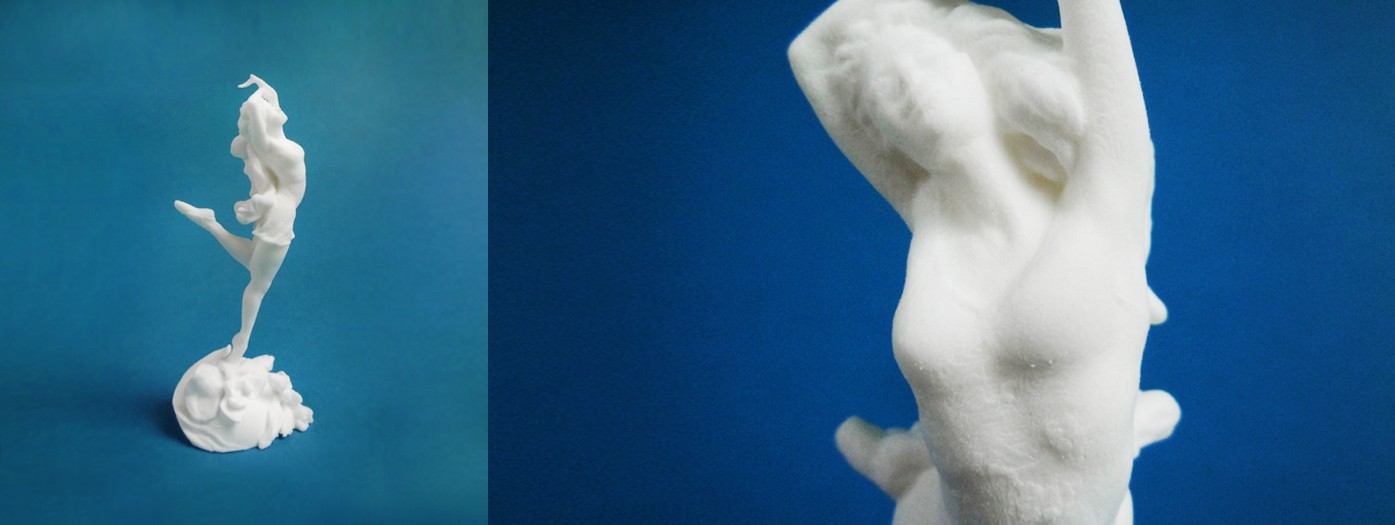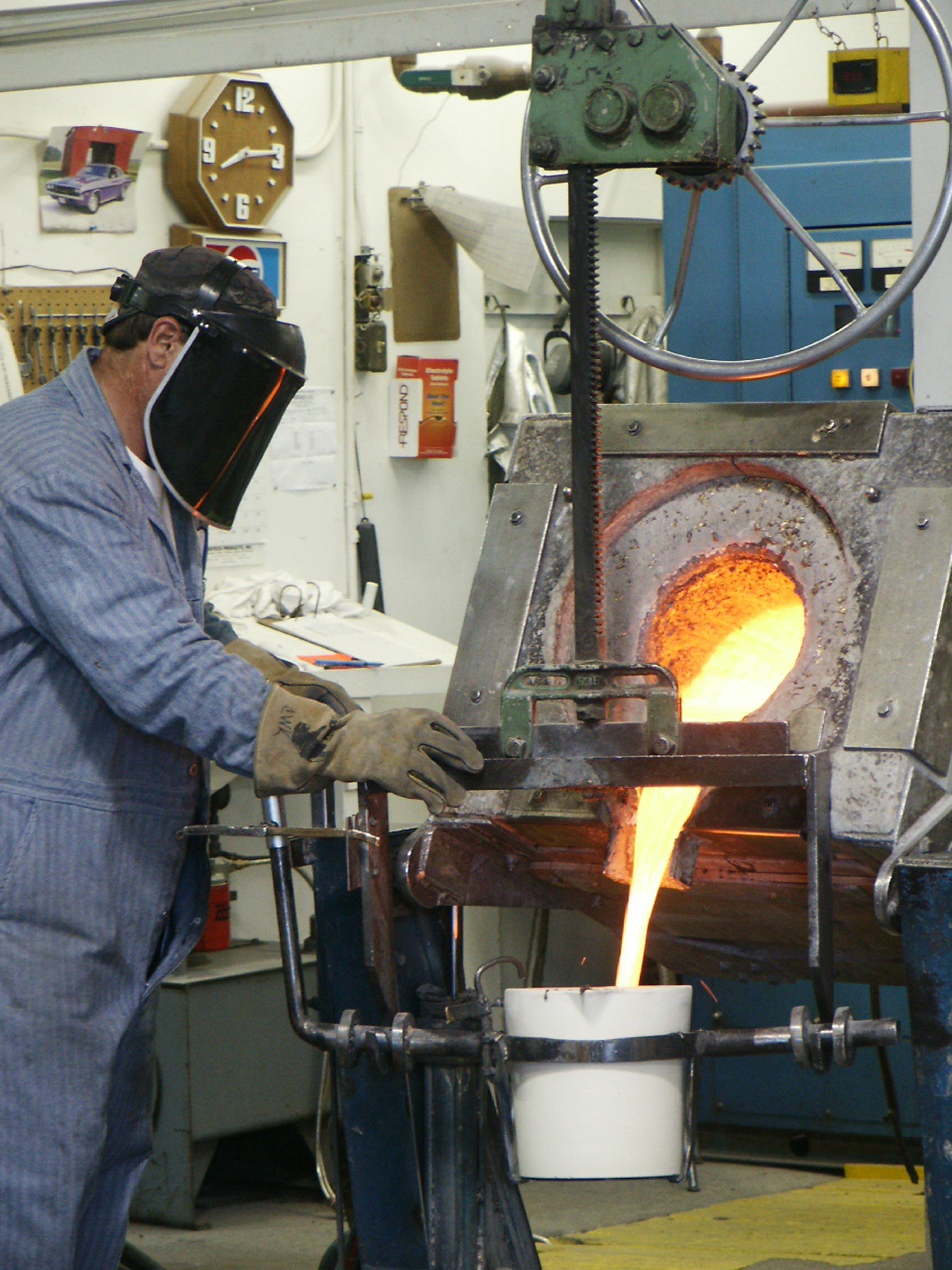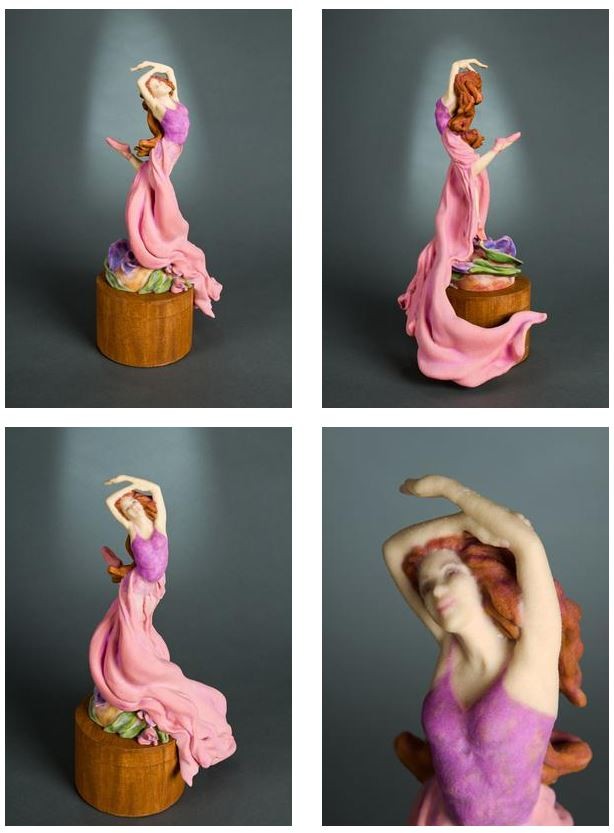The Artistry of 3D Printing
Posted By Zach Correa on Feb 4, 2015 | 2 comments
Before 3D printing, artistry and craft were synonymous with lengthy production times. We had the chance to run into Tim King from King Sculpture in order to get a glimpse of how 3D printing is changing the landscape of sculpture.
For more than 15 years Tim has been studying, practicing, producing, and selling traditional lost wax bronze castings. All the while he has looked for methods to share the costly art form with friends, family, and clients of all walks of life. Tim mentions that it has frequently been a source of frustration to see someone fall in love with one of his creations only to then realize it appears unaffordable due to the extreme labor and intensive manufacturing costs related to bronze. Tim’s specialties are family and dance subjects, which lend themselves to personal customization. It has also been challenging to earn commission projects due to both time and cost constraints of traditional sculpture and casting techniques.
Over the last decade, many professional sculptors have integrated digital scans into their workflow, enlarging their sculptures’ scale through large blocks of milled foam and applied clay. As our readers already know, more recently traditional fine art sculptors have been reducing and 3D printing in various materials. Due to the cost of highly detailed and smoothly finished surfaces, often the 3D print is only used to manufacture a rubber mold, enabling editions to be cast in less expensive materials. This process works well for high quantities of casts where the initial investment in time and money for a print, mold, and manual labor of casting and surface finishing can be recovered. But, what about one of a kind sculptures and commissions?
Tim is excited to be delving into 3D Printing as just one of his company’s tools to design and place custom sculptures into his client’s hands. He has a passion in sculpting detailed faces from client photos, especially children. However, this is a time consuming process, and the effort of integrating a traditional lost-wax process with digital tools has not been without challenges. Currently, bronze casting involves: An original clay sculpture, rubber mold(s), wax duplicate for every bronze edition cast, one time use ceramic mold formed around the wax, melting the wax out of the ceramic, molten metal pouring, metal cleaning, welding, removal of weld lines, and then coloring the metal (patina). In fact, part of this process stays the same when you order an object in metal from us, but instead of doing the wax model manually, we 3D print it first.
Digital can be incorporated at various points of sculpture production: initial design iterations, wax prints, mold prints, “growing” direct to a final product in plastic or metal, or any combination of steps. Tim’s primary struggle has centered around each of these integration points requiring research, personal education, testing, and new partnerships. Much like the artists of the past learning how to integrate a camera, power tool, or new material into their workflow, 3D printing has opened numerous doors to sculpture creation.
Similar to many of our readers researching and learning through trial and error, Tim contacted more than 10 different print suppliers and service bureaus, attended in person and online seminars, met with Sculpteo representatives and soaked in every minute of 3D Printer World Expo in Burbank California USA, bought and practiced ZBrush, completed a 10 week online ZBrushWorkshops.com class with a 3D printing focus, and continues to read many books, magazines, and daily 3D printing newsletters.
Was this enough to be proficient? According to Tim, this will be an ongoing developing experience, with a key factor being partnerships with trusted suppliers. While Tim is working closely face-to-face with a local technology team: The 3D Printing Store in Denver Colorado, he has also been very satisfied with the timeliness, pricing, and quality of Sculpteo. He comments that he is particularly impressed with their customer service response and their proactive initiative to reach out and ask if there is anything else that they can do for their customers.
Some of Tim’s challenges have been due to his subject matter of choice: detailed figurative dancers, much in the style of the Art Nouveau movement (~1890 – 1915). Long flowing hair and clothing with twisting thin shapes are prevalent in Tim’s artwork. He has a passion to design and express emotion and story through delicate details. In comparison, new technology advancements often influence art style trends and capabilities. For example metallurgy, color printmaking, and photography enabled the artist to express their vision in new or enhanced mediums. This appears to be continuing with the implementation of 3D Printing into Fine Arts. Through scanning and manipulation of existing sculpture, or the creation of completely new digital designs, only relatively recently do we have the capability to again create physical objects that may have previously only existed in artists’ minds. Trial and error, along with research have been need to correctly set expectations in finding efficient solutions to create and replicate forms with challenging structures which have not always been feasible to print.
These considerations, along with a technology interest, desire to learn and share, a preference for leading-edge but not bleeding-edge solutions, along with a need to maintain a time balance with family and traditional sculpture commitments, all led to enhancing King Sculpture Studios with 3D Printing. Their current projects are focused upon digitally personalizing dance poses and faces in order to 3D print a product directly ready for the client.
Tim has enjoyed testing many companies, learning software, taking classes, watching videos, attending 3D Print expos, and partnering with suppliers. He does expect great service, which he has received from Sculpteo. He suggests that we should all be willing to test and push limits as we learn and evolve during this exciting and transitional artistic period.
If you have a project that might be interesting on the Sculpteo blog, feel free to contact us! Otherwise be sure to head over to King Sculpture’s Sculpteo gallery to see all of Tim King’s latest creations.


 Connect with Google
Connect with Google Connect with Facebook
Connect with Facebook

